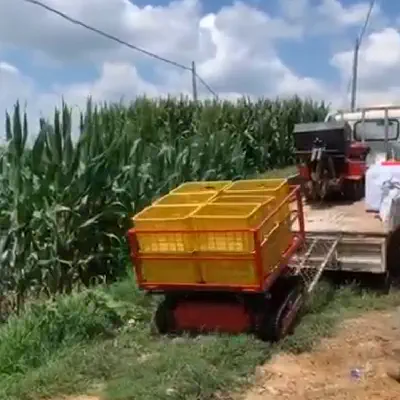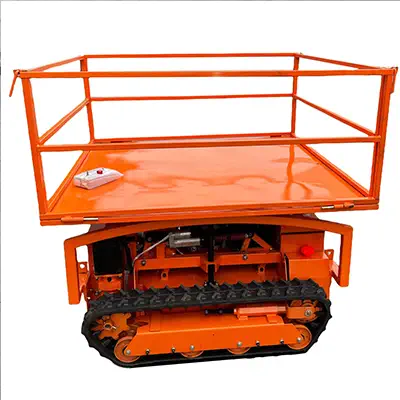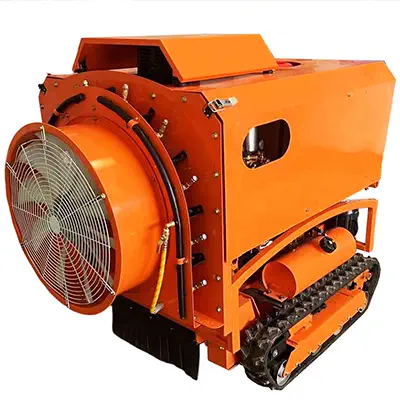
Remote lawn mower
We provide various types of Remote lawn mower. If you need customization, please feel free to contact us.
Know More About Remote lawn mower
A remote lawn mower, also known as a robotic lawn mower, is a type of lawn care equipment that operates autonomously to cut grass without the need for human intervention. These devices offer several features and advantages, including:
- Remote Control: Many remote lawn mowers can be controlled remotely using a smartphone app or a dedicated remote control, allowing users to start, stop, or program mowing sessions from a distance.
- Autonomous Operation: These mowers are designed to operate without human intervention. They use sensors and navigation technology to move around the lawn, avoiding obstacles and cutting the grass systematically.
- Safety Features: Most remote lawn mowers come with safety features like obstacle detection sensors to avoid collisions with objects, pets, or people. They also have sensors that can detect if the mower is lifted, which will automatically shut down the blades.
- Programmable Schedules: Users can typically set a mowing schedule for their robotic lawn mower. This allows you to determine when and how often the mower should cut the grass.
- Quiet Operation: These mowers are generally quieter than traditional gas-powered mowers, making them less disruptive to the neighborhood and allowing them to operate at night without disturbing the peace.
- Low Maintenance: Robotic lawn mowers require minimal maintenance. They usually only need blade replacements, occasional cleaning, and the replacement of their lithium-ion batteries.
Technical specs comparison of Remote lawn mower
| Specification | Unit | LM550 | LM800 | LM900 | LM1000 | LM1300 |
| Cutting width | mm | 550 | 800 | 900 | 1000 | 1300 |
| Machine weight | kg | 115 | 280 | 320 | 368 | 412 |
| Engine | / | Loncin | Loncin | Loncin | Loncin | Loncin |
| Engine power | kw | 4.2 | 10.2 | 13.2 | 19.85 | 19.85 |
| Displacement | cc | 224 | 452 | 680 | 764 | 764 |
| Remote Distance | m | ≤200 | ≤200 | ≤200 | ≤200 | ≤200 |
| Working slope | ° | ≤40 | ≤40 | ≤50 | ≤50 | ≤50 |
Remote lawn mower application area

Residential Lawns
- Automated operation: A remote lawn mower is an automated device that can independently perform lawn cutting tasks without the need for manual operation. This means that you don't need to personally drive the lawn mower or hire lawn mowers, which can save time and energy.
- Accuracy and uniformity: The remote lawn mower cuts the grass in an accurate manner, ensuring that the surface of the lawn is evenly mowed. This helps to maintain a clean appearance of the lawn and avoid uneven grass on the lawn.
- Multifunctionality: Some remote lawn mowers can also perform multiple tasks, such as mowing, trimming, sweeping, blowing, and fertilizing. This increases their versatility and can meet different lawn maintenance needs in different seasons and meteorological conditions.
- Saving labor costs: Hiring lawn mowers requires payment of wages, while remote lawn mowers only require one-time purchase and maintenance costs. This can save labor costs for homeowners and save money in the long term
Landscaping
- High efficiency: Commercial landscapes typically have a large area, and remote lawn mowers can complete mowing tasks more quickly, reducing maintenance time. This is particularly suitable for large shopping centers, hotels, schools, and other places.
- Reduce labor costs: Hiring maintenance workers usually requires payment of wages and benefits, while remote lawn mowers only require one-time purchase and maintenance costs. This reduces the labor cost of landscape maintenance, especially for commercial enterprises, which is very important.
- Timing and scheduling tasks: Remote lawn mowers can perform mowing tasks according to a predetermined schedule, ensuring that the landscape remains clean and attractive at all times. This is particularly important for commercial landscapes as they require continuous appearance maintenance.
- Uniform mowing: The remote lawn mower cuts the grass in a precise manner, ensuring uniform mowing of the lawn surface. This helps to ensure the overall appearance and quality of the landscape.

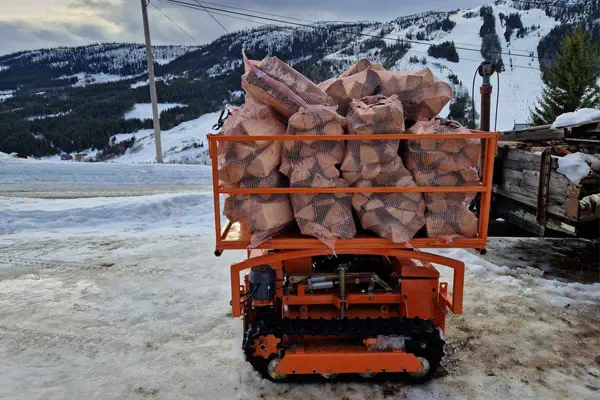
Sports Fields
- Loading frame: The core of the loading and handling function is to install the loading frame on the remote lawn motor. This frame is usually located at the top of the machine, allowing for the safe placement of goods or other items on it. The design of loading frames usually depends on specific application requirements, which can be platform shapes or other appropriate structures.
- Safety: Remote lawn mower can effectively ensure transportation safety when handling goods. The loading frame is firmly welded to the machine to prevent the goods from sliding or falling off during transportation. In addition, remote lawn movers also have the ability to avoid collisions and prevent collisions with obstacles or personnel.
- Multipurpose application: After installing a loading framework, remote lawn mover can be used in various application fields. They can be used for horticultural projects, agricultural tasks, automated transportation and logistics tasks in commercial and industrial environments. This versatility makes machines a valuable automation solution.
Orchards and Vineyards
- Reducing weed competition: Weed competition in orchards and vineyards is harmful to plant growth and fruit yield. Remote lawn mowers can cut grass regularly, ensuring that the ground around the plants is kept clean, reducing competition from weeds, and promoting plant growth.
- Preventing fruit damage: Traditional lawn mowers may damage low hanging fruits or grape vines, while remote lawn mowers typically have collision sensors and safety features to avoid damage to plants.
- Keeping the orchard clean: Remote lawn mowers cut the grass in a uniform and precise manner, ensuring that the surface of the orchard or vineyard remains clean, which helps improve the landscape aesthetics and fruit quality
- Multifunctionality: Some remote lawn mowers can also perform tasks such as cutting edges, sweeping, and weeding, helping to maintain the appearance and hygiene of orchards or vineyards.

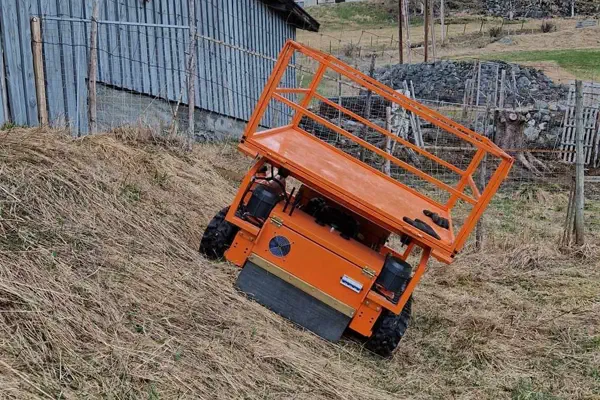
Hilly or Challenging Terrain
- Safety: Areas with mountainous or challenging terrain are often more dangerous, and traditional lawn mowers can be difficult to maneuver and can easily lead to dangerous situations. Remote lawn mowers can perform tasks without direct human intervention, reducing risks to operators.
- Ability to adapt to terrain: Some long-range lawn mowers are designed to handle uneven and hilly terrain. They are often equipped with four-wheel drive, off-road tires and suspension systems to operate on steep slopes and rough terrain.
- Reduced physical labor: In hilly or challenging terrain, using a traditional lawn mower can be physically demanding. Remote mowers can reduce the physical strain on workers, especially when climbing hills or crossing uneven ground.
- Precision Operation: Long-range lawn mowers typically offer precision operation, allowing for precise mowing in areas with challenging terrain. This helps ensure the ground is tidy and avoids missing or overlapping mowing.
Remote lawn mower Purchase Guide
Purchasing a remote lawn mower is a significant investment, and it’s important to make an informed decision based on your specific needs and preferences. Here’s a purchase guide to help you select the right remote lawn mower for your requirements:
- Assess Your Lawn Size and Terrain: Measure your lawn's size to determine the cutting capacity required. Consider the terrain; is your lawn flat, hilly, or uneven? The type of terrain will affect the choice of mower.
- Budget: Determine how much you're willing to spend. Remote lawn mowers can vary widely in price, so it's important to set a budget.
- Cutting Width: The cutting width will impact the time it takes to mow your lawn. Consider your lawn's size when choosing the cutting width.
- Battery or Fuel: Remote mowers can be battery-powered or fueled by gasoline. Battery-powered mowers are more eco-friendly, while gasoline-powered mowers may offer more power.
- Run Time: For battery-powered mowers, check the run time on a single charge. Ensure it's sufficient to complete the mowing job in one go.
- Mowing Pattern and Navigation: Look for a model that offers efficient mowing patterns and navigation capabilities. Some advanced mowers use GPS and boundary wires for precision.
- Sensors and Safety Features: Check for collision sensors and safety features to prevent accidents or damage to the mower and obstacles.
- Noise Level: Consider the noise level produced by the mower. Some models are quieter than others, which may be important if you have close neighbors.
- Smart Features: Some mowers offer smartphone apps for remote control, scheduling, and tracking. Smart features can enhance convenience.
- Brand and Reputation: Research different brands and their reputation for quality and customer support. Reading reviews and seeking recommendations can be helpful.
If you have questions when purchasing aRemote lawn mower or would like to learn more about the performance of ourRemote lawn mower equipment,
please click the button below to contact us.
FAQ About Skid steer loader
A remote lawn mower is a type of automated lawn care equipment that can be operated without direct human intervention. It’s designed to cut grass in various outdoor settings, such as residential lawns, commercial landscapes, and sports fields.
Remote lawn mowers work using various technologies. Robotic models use sensors, GPS, and boundary wires to navigate and cut grass autonomously. Remote-controlled models are operated by a user using a remote control or smartphone app.
Some advantages include time savings, labor cost reduction, precise and uniform grass cutting, safety features, eco-friendliness, and the ability to operate in challenging terrains.
Yes, many remote lawn mowers can handle large areas. The cutting capacity varies depending on the model, so you should choose one that suits the size of your lawn.
Most remote lawn mowers have safety features, such as sensors to detect obstacles and shut off when lifted or tilted. However, it’s essential to monitor their operation around pets and children for added safety.
Maintenance requirements vary by model, but generally, you’ll need to clean the mower regularly, sharpen or replace the blades periodically, and keep the charging or refueling system in good condition.
Many remote lawn mowers come with scheduling features. You can set specific times and days for the mower to operate, making it convenient for maintaining your lawn.
Some remote lawn mowers are designed to handle uneven terrain and slopes. Be sure to choose a model with the appropriate capabilities for your specific landscape.
The lifespan varies depending on the model and maintenance. On average, a well-maintained remote lawn mower can last for 5 to 10 years or more.
Remote lawn mowers are typically quieter than traditional gas-powered mowers, making them less disruptive to you and your neighbors.
Have Anything To Ask Us?
Please fill in your email in the form and we’ll get back to assist you soon!
- Will contact you within 1 hour.
- Don't worry, we hate spam too!








